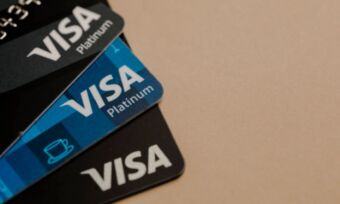What is an interest-free period for a credit card?
The interest-free period is the maximum number of days you won’t be charged interest on any purchases you’ve made with the credit card, provided you pay off your closing balance (the amount you owe from your last statement period) in full by the due date.
A common misconception of the interest-free period is that the full period duration applies from the time each purchase is made. For example, if the interest-free period is up to 55 days, you may think you will have 55 days to pay off each purchase before interest will be charged. But this isn’t the case.
The key wording here is ‘up to’; it’s not 55 days for each purchase. Instead, the interest-free period typically starts on the first day of your credit card’s statement period, which is usually monthly or every 30 days.
To get the full 55 days interest-free (including the day of the purchase) from the earlier example, a purchase would need to be made on the first day of your statement period. This could be the first day of the calendar month, or the monthly anniversary of the date you took out the card. Check your credit card statement for these dates and to confirm when your statement period starts and ends.
Be mindful that not all purchases on a credit card qualify for an interest-free period. Also, credit card companies usually charge interest on cash advances from the date of the transaction.
How does a credit card interest-free period work?
To show how credit card interest-free days work, let’s run through a hypothetical example, assuming that you have a credit card with up to 55 days interest-free and a statement cycle that runs from the 1st to the 30th day of a 30-day month.
In this example, you purchase a new refrigerator for $1000 using your card, and don’t buy anything else with it. We’ll take a look at three different scenarios – the purchase being made at the start, middle or end of the statement period.
Purchase made on day 1
Total number of interest-free days: 55
Since your purchase was made on the first day of the statement period, you would receive the full benefit of the credit card’s 55-day interest-free period.
If you don’t make the full payment by the due date – i.e. the 55th day after the start of the statement period, with the start date counting as the first day – you would forfeit the interest-free period and be charged interest on the remaining balance from after the due date.
Purchase made on day 15
Total number of interest-free days: 40
Since the purchase was made on day 15 of the statement period, you would only get 40 days interest-free. As before, if you did not pay the balance in full by the due date, you would incur interest charges on the remaining balance.
Purchase made on day 30
Total number of interest-free days: 25
The purchase is made on the final day of the statement period, so you have only 25 days to pay the closing balance in full.
If you have the option, delaying a purchase until the first day of the new statement period could let you receive your full 55 days interest-free (assuming you paid your existing closing balance on or before the current due date). This would give you more time to pay off the purchase before being charged interest.
What happens if I don’t repay my credit card closing balance in full?
If you don’t repay your closing balance in full by the due date, be charged interest on your outstanding account balance from after the due date. You’ll also lose the benefits of interest-free days until the day after your credit card’s account balance is repaid in full.
How do I avoid credit card interest charges?
The only way to make sure you’re not charged interest each month is to pay the closing balance in full on or before the due date. This is regardless of whether you use your credit card for large one-off purchases or for smaller everyday expenses. The closing balance and the due date will be clearly marked on your statement each month.
It may be worth checking with your bank if it’s possible to set up an automatic payment from your bank account or home loan offset account (if you have one) to clear your credit card balance each statement period.
Some other steps you could take to reduce or eliminate credit card interest include:
- Pay more than the minimum repayment: Every extra dollar will reduce your monthly interest bill.
- Pay any overdue balance as soon as you can: Interest is typically calculated on a daily basis on a credit card’s outstanding balance. This means the sooner you repay your balance, the less you’ll be charged in interest.
- Timing can help: Consider trying to make bigger purchases towards the start of the statement period so you have more time to pay them off before the interest-free due date.
- Type of credit card: Consider a credit card with a balance transfer offer. Transferring your balance to another card at a lower rate for a period of time (perhaps even 0%) may give you some breathing space to reduce and eliminate the debt without also having to budget for interest charges. However, keep in mind that these offers are often only for a short time and there could be a higher interest rate to pay if you haven’t paid off the balance after the offer expires.
If you’re finding it difficult to manage your credit card repayments, you can contact your bank or credit card company to see what options may be available to you.
You can also get free, independent and confidential advice from a financial counsellor by contacting the National Debt Helpline on 1800 007 007.








